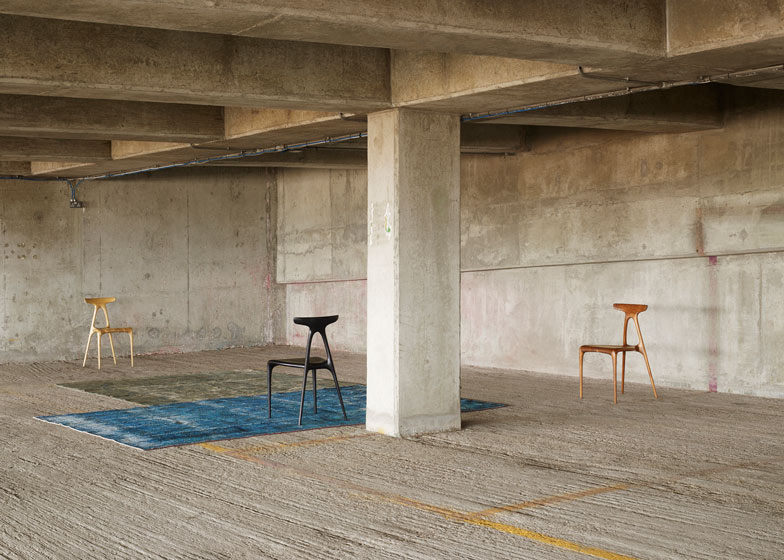Milan 2015: computer-controlled cutting was used to shape the curves of this solid wood chair by Made in Ratio founder Brodie Neill.
The stackable Alpha chair was designed to be manufactured using a five-axis computer numerically controlled (CNC) router.
This production technique employs a machine with an arm that rotates around five axes to carve away pieces from a solid block of wood, until the shape of the digital model is left.
The method is commonly used to create quick moulds or prototypes for furniture pieces that are then often produced in other materials. However, Neill is using it to create finished wooden chairs instead of time-consuming techniques like hand carving.
"Through advancements in technology the CNC process is becoming more readily available for production and no longer limited to just prototyping, tooling or even limited editions," he told Dezeen.
Neill set up his brand Made in Ratio to provide a sales platform for his self-produced furniture. His previous products have mostly been sculptural limited-edition furniture pieces, but he is now employing the CNC technology to mass-produce the new items.
"Some of the factories we work with use CNC production processes in the manufacturing of traditional chair designs and it was in witnessing this that sparked the idea to design a chair from scratch with this technique in mind," Neill said.
The digital model of the chair's curvaceous body was designed using computer software that enables a 3D form to be manipulated on screen.
"We are able to digitally sculpt each wooden element complete with its jointing detail direct from a fluid 3D digital surface," said Neill.
The files are then sent to the CNC machine, which carves different sections of the chair individually from wooden blocks.
Each element is then fixed together so the curves align, with the aim to create the effect that the whole chair was sculpted from one large piece of wood.
The Alpha chair takes its name from its A-shaped back, formed from legs that extend upwards to meet at a high backrest, intersected by the seat.
"The A shape and the inherent triangle that it creates, gives the complete chair structure a solid base to work from," Neill told Dezeen.
All of the joints are hidden within the structure to emphasise the continuity of the shape.
"Each component melds into the next in an organic, almost seamless fashion that takes inspiration from forms found in nature, in particular the sinuous lines of whales vertebrae that used to be washed ashore on the beaches of my native Tasmania," Neill added.
Available in ash and walnut, the chair will be launched at a site-specific installation at Via Palermo 11 in the Brera district during Milan design week, which runs from 14 to 19 April.

